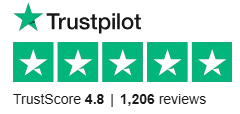
Differences Between Secured And Unsecured Loans
Deciphering Secured vs. Unsecured Business Loans: What UK SMEs Need to Know Navigating the business loans market in the UK can often feel like solving…
We have partnered with Funding Options so you can compare over 120 lenders to find the right finance partner for you.

Some of the asset finance lenders compared….
Asset Finance is a general term used for a range of commercial funding options. Some examples of asset finance include hire purchase, leasing and refinancing. Firms in our asset finance comparison will offer one or more products, and the information provided is a summary of what that brand offers.
*Rates of interest shown will be the lowest offered by the lender from one or more relevant products. These do not include any product fee’s that may be applicable and is not an APR. Rates may be variable or fixed. Loan data provided by Funding Options.
Always check up to date rates and terms with the lender
At Simply Business Loans we have partnered with Funding Options to bring you access to over 120+ lenders. Funding Options provides you with one simple application process that delivers uniquely tailored loan solutions for your business. Their technology, Funding Cloud, will accurately validate your business profile, matching you to the industry’s largest lender network.
Start with how much you need to borrow, what it’s for, and basic information about your business.
Smart technology at Funding Options will compare up to 120+ lenders and match you with matched finance options
Help is provided to you during application process to receiving your funds. It’s free to apply and it doesn’t affect your credit score
Asset finance loans are a way for UK small businesses and SMEs to get funding by leveraging their business assets. This guide explains asset finance loans, including key features and which businesses they’re most suitable for.
Key Features of Asset Finance Loans
Funding Based on Business Assets
Loans are secured against business assets such as machinery, vehicles, or IT equipment. This allows businesses to acquire new equipment or release capital tied up in existing assets.
Two Main Types
Asset Purchase (Hire Purchase)
Spread the cost of an asset over time with eventual ownership. Often requires a deposit, followed by fixed monthly payments.
Asset Leasing
Allows businesses to use the asset without ownership. Flexible leasing options include finance lease (with an option to buy) and operating lease (short-term use).
Sale and Leaseback
Sell an existing asset to a lender and lease it back immediately. This unlocks cash tied up in assets while retaining their use.
Flexible Repayment Terms
Repayments can be structured over several years, often aligning with the asset’s expected lifespan. This helps manage cash flow more predictably.
Fixed or Variable Interest Rates
Fixed Rate: Predictable repayments with no interest rate fluctuations.
Variable Rate: Interest may change based on market conditions, potentially saving money in low-rate environments.
Best-Suited Businesses
Manufacturing and Construction: Ideal for businesses needing expensive machinery and equipment. Enables businesses to spread the cost of assets over time.
Transport and Logistics: Suitable for businesses acquiring new vehicles or fleets. Offers flexible leasing or purchasing options.
IT and Technology Firms: Useful for companies investing in software or IT infrastructure. Helps manage the cost of rapidly depreciating technology.
Growing Businesses: Helps expanding companies acquire new equipment or improve existing assets. Allows growth without a significant upfront capital investment.
Comparing Asset Finance Loans
Define Your Needs: Determine the type of asset required and the amount of financing needed.
Compare Interest Rates and Fees: Review the Annual Percentage Rate (APR) and any hidden fees.
Check Eligibility Requirements: Different lenders have varying criteria for business size, credit score, and asset value.
Consider Other Loan Types: Compare with other options like working capital loans or business lines of credit.
Seek Professional Advice: Consult financial advisors or business mentors to identify the best funding solution.
Asset finance loans can help small businesses and SMEs acquire or unlock the value of assets, enabling growth and improving cash flow. Comparing different loans, including asset finance and other options, can help you choose the best solution for your business.

Deciphering Secured vs. Unsecured Business Loans: What UK SMEs Need to Know Navigating the business loans market in the UK can often feel like solving…

Navigating the Landscape of UK Business Loans: What You Need to Know As the backbone of the British economy, small to medium-sized enterprises (SMEs) are…

The Key Takeaways The 2024 UK budget was announced on October 30th 2024. It is the first budget of the Labour government in 14 years.…
About This Information
Our articles, guides & reviews are provided as generic information only. Any expressed view, product or service mentioned within these does not constitute as financial advice or recommendation by us.
Be mindful that information may have changed since publication.